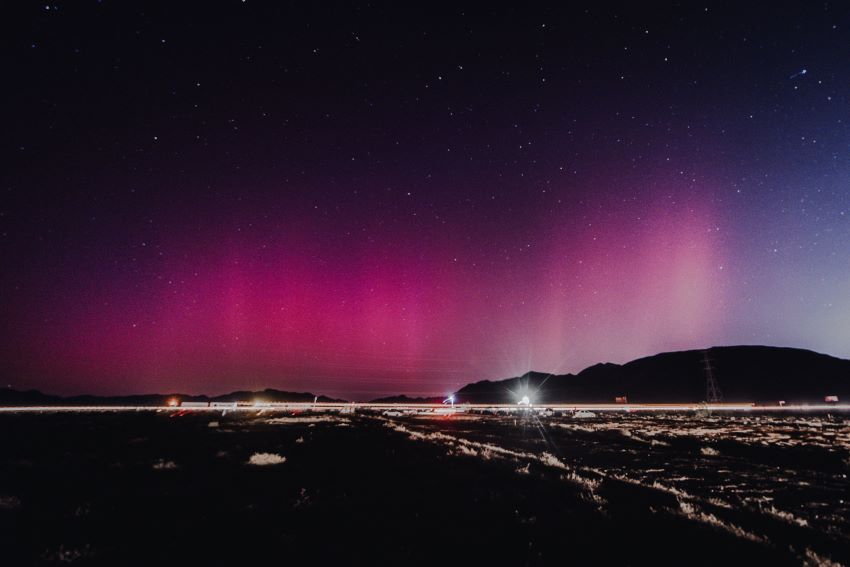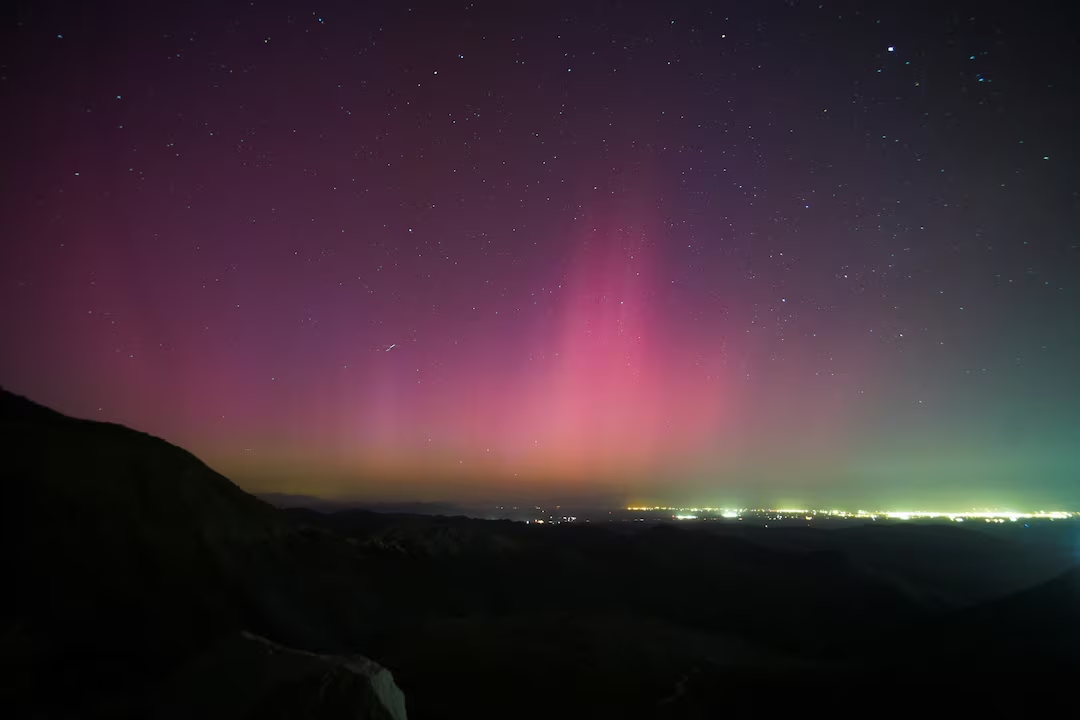On May 10, 2024, as families across Mexico celebrated Mother’s Day with traditional serenades, an unexpected event transformed the morning into something truly extraordinary. A powerful geomagnetic storm, the strongest in over two decades, illuminated the night sky with auroras visible across the country. This marked the first time since 1989 that such a phenomenon had been observed in Mexico, sparking widespread attention and discussion.
Auroras are typically seen near the Earth’s polar regions, where the planet’s magnetic field is weakest. However, this storm was so intense that the vibrant lights were visible far beyond their usual range, reaching as far as Italy and southern parts of the U.K. The event defied expectations, as low-latitude countries like Mexico are not typically locations for aurora sightings.
Solar Storms, Auroras, and Their Impact on Technology and Global Infrastructure
Auroras occur when charged particles from the sun collide with gases in Earth’s atmosphere, producing colorful displays of light. These particles are often carried by coronal mass ejections (CMEs), massive bursts of plasma that erupt from the sun’s surface. Traveling at extreme speeds, these solar storms interact with Earth’s magnetic field, sometimes generating spectacular auroral displays but also posing risks to technology and infrastructure.

Although the auroras were visually stunning, geomagnetic storms can have serious consequences. The May 10 storm briefly disrupted Mexico’s satellite navigation system, causing small but significant time delays. Such disturbances can impact financial markets, GPS navigation, and even power grids. Scientists warn that as the sun becomes more active in its current cycle, similar disruptions could become more frequent and severe.
Experts from Mexico’s Space Weather Service (SCIESMEX) and the National Space Weather Laboratory (LANCE) monitored the storm closely. Their research helped assess the storm’s impact on the country’s infrastructure. Fortunately, Mexico’s national power grid remained stable, demonstrating its resilience. However, other low-latitude countries with less robust infrastructure may be more vulnerable to similar events in the future.
Citizen Science, Solar Activity, and the Legacy of the Gannon Geomagnetic Storm
The widespread use of smartphones allowed people across Mexico to document the auroras, providing valuable data for scientists. Many images were shared on social media, offering researchers new perspectives on the storm. These citizen-captured images are now being used to study past solar storms and improve predictive models for future geomagnetic events.
The sun is approaching its solar maximum, the peak of its 11-year cycle of activity. During this period, solar storms are expected to increase in frequency and intensity. Historical records show that similar solar maxima have caused significant disruptions, including the Great Quebec Blackout of 1989. As solar activity intensifies, experts stress the importance of strengthening global infrastructure to withstand future geomagnetic disturbances.
This extraordinary geomagnetic storm has been named the “Gannon Storm” in memory of Jennifer Lea Gannon, a NASA scientist who contributed significantly to space weather research before her passing. Researchers in Mexico and around the world continue to study the event, aiming to improve early warning systems. While the auroras of 2024 provided a breathtaking spectacle, they also serve as a reminder of the unpredictable power of the sun and the need for preparedness in an increasingly technology-dependent world.


